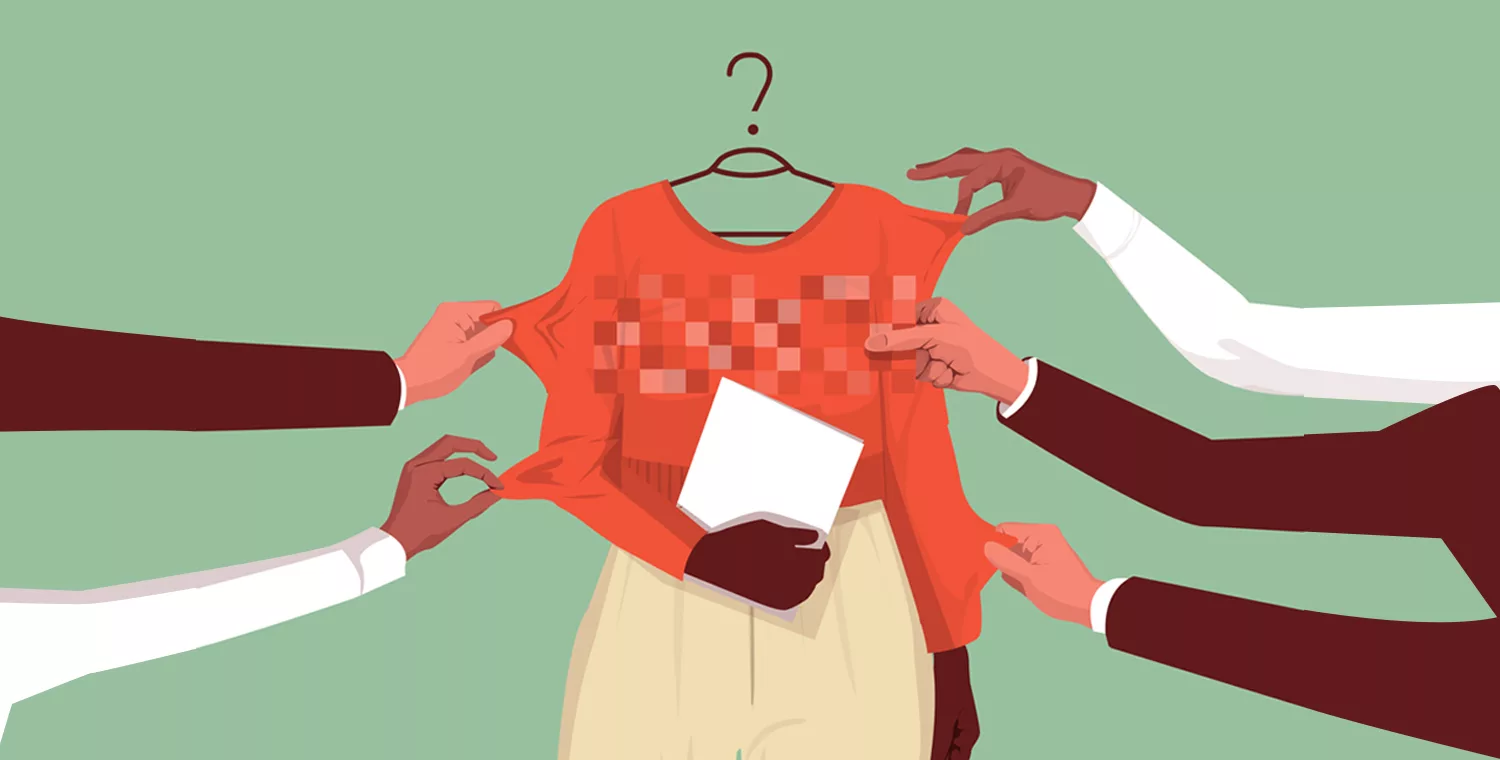Your cart is currently empty!

Workplace Attire: Can Your Boss Tell You What to Wear?

This article is presented by le bec, an NPO offering support resources dedicated to workers in the communications and marketing industry. The free, confidential helpline is available 24/7.
For the first time in two years, Anna is putting on pants. Not sweatpants or pyjama bottoms, real pants.
This morning, Anna is going to work at the office. Yep, her actual office. Not the one on her couch, on her kitchen table, or in her bed with her laptop propped on her lap. Spring has arrived, the leaves have barely emerged from their buds, and pastel-colored tulips fill the streets. The air is fragrant and the sun hugs people’s bodies.
“I forget. What do people wear to work?” wonders the public relations officer as she opens her closet.
“Nope, not that dress! It irritates my armpits. Not that skirt, unless I plan to not breathe from 9 to 5. Oh, not that shirt either: it’s too tight around my neck…”
Anna, slightly anxious about going back to the agency, settles on a pair of beige pants—the one that looks professional, but that also feels casual. She puts on a t-shirt, a super comfy sweater, and a pair of running shoes before heading out to catch the metro.
To bra or not to bra?
“Wow, the pandemic hasn’t been easy on you, Anna!”, says Maryse, the virtual strategist, without an ounce of tact. “I have a promo code for my virtual zumba class, if you want. You’ll see, those fifteen extra pounds will be gone by your vacation in July. Bikini season, my friend!”
Ouch. By the time Anna fully appraised what had just happened, Maryse had already left the lunchroom. Watching her walk away down the hall, the 30-something wonders how her colleague manages to walk in stiletto heels without spilling her coffee. While she used to climb on such stilts before the pandemic, she now fully appreciates her running shoes.
Anna settles in her office, with which she is still happy to be reunited. It’ll be fun to have lunch with real people instead of eating a tuna sandwich by herself in front of old Friends episodes.
At noon, Anna goes back to the lunchroom. The building’s central heating system still seems to be working despite the mild weather. She takes off her sweater and puts it on the back of her chair. Taking a bite of her tomato pasta, Anna notices two of her colleagues staring at her, smirking.
“What is it? Do I have sauce on my face?” she asks, suddenly self-conscious, looking down at her t-shirt for any stains.
They sheepishly laugh and tell her no, that everything’s fine.
Her colleagues keep on staring. Suddenly, Anna realizes that she’s not wearing a bra. She adopted this habit at the beginning of the pandemic. Before lockdown, she never would have considered not wearing a bra at the office, or even in everyday life. This morning, however, she didn’t even think of putting one on. Free the nipple, as people chant on Instagram.
Anna scarfs her lunch and goes back to her office to eat her apple in peace. There are damned limits to having your breasts checked out at work!
Spring-office collection
Around 4 p.m., Denis and Yasmine, Anna’s bosses, come into her office. It was planned, they need to discuss tomorrow’s meeting, the one with “important clients” who will be coming to the agency. The meeting goes smoothly. It’s amazing how much faster it goes in person!
Yasmine leaves first, as she has a Zoom meeting. “I can’t stand Zoom meetings anymore!” she mumbles as she walks out the door.
“May I say something, Anna? On behalf of Yasmine and I,” says Denis, sitting across from Anna’s desk.
Anna nods, a little puzzled by her boss’s solemn tone.
“Tomorrow, for the meeting, can you… well, I mean, it would be better if… It’s nothing serious, but if you could just…”
Denis stammers, searching for the right words and avoiding his employee’s gaze.
“What I’m trying to say is, could you dress appropriately? When it’s just us, it’s okay. We… adapt,” he said, letting out a nervous laugh. But when you’re with clients, it would be better if you didn’t draw attention to your… your… well, I mean… You know what I mean?”
Anna nods in disbelief.
“Before working remotely, you were always well dressed, as I remember it,” he continues. “You know, your pretty dresses, nice shirts, and beautiful shoes. It would be more appropriate if you wore those kinds of outfits for our clients. We wouldn’t want to give them the impression that we’re sloppy and then miss out on a good contract. Alright, I’ll let you get back to work. See you at the meeting tomorrow. ”
Denis leaves the room. Anna can’t believe it. Her boss just imposed a dress code on her to avoid possibly losing a contract. What kind of reasoning was that? If she was assaulted in the street, would Denis think it was because of her outfit?
Anna, like any millennial, went on Google:
Can my boss make me wear a bra?
Between labour law and porn sites (oops!), Anna can’t find a clear answer. She sifts through the results of her search, skims the pages’ content, and becomes exasperated. She leaves the office, tired.
The next morning, Anna wakes up feeling refreshed. She prepares coffee while listening to the radio, like she does every morning. Then, she goes to her bedroom and opens the top drawer of her dresser, the one in which she keeps her underwear. As she lays eyes on the lace bralettes and underwired bras, a lump lodges in the pit of her stomach.
-
Cronin, N. J. (2014). The effects of high heeled shoes on female gait: a review. Journal of Electromyography and Kinesiology, 24(2), 258-263. https://doi.org/10.1016/j.jelekin.2014.01.004
Dawson, G. A., Karl, K. A. et Peluchette, J. V. (2019). Hair matters: Toward understanding natural black hair bias in the workplace. Journal of Leadership & Organizational Studies, 26(3), 389-401. https://doi.org/10.1177/1548051819848998
Puszczałowska-Lizis, E., Dąbrowiecki, D., Jandziś, S., & Żak, M. (2019). Foot deformities in women are associated with wearing high-heeled shoes. Medical Science Monitor: International Medical Journal of Experimental and Clinical Research, 25, 7746.
Rosette, A. S. et Dumas, T. L. (2007). The hair dilemma: Conform to mainstream expectations or emphasize racial identity. Duke Journal of Gender Law & Policy, 14, 407-422.
Smith, J. K., Liss, M., Erchull, M. J., Kelly, C. M., Adragna, K. et Baines, K. (2018). The relationship between sexualized appearance and perceptions of women’s competence and electability. Sex Roles, 79(11), 671-682. https://doi.org/10.1007/s11199-018-0898-4


